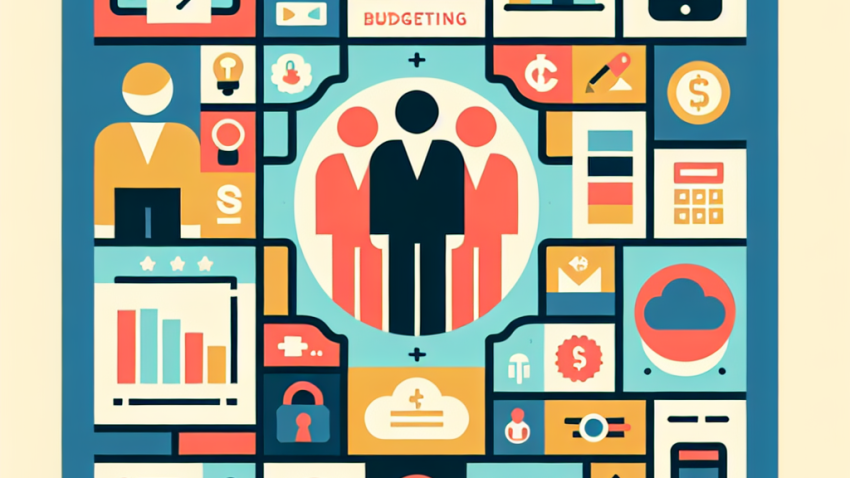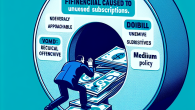
Best Budgeting Apps for UK Beginners: I Tested 7 So You Don’t Have To
Budgeting 101: A Simple Guide for Beginners
Let’s face it—budgeting isn’t the sexiest topic in the world. But you know what’s even less sexy? Getting hit with overdraft fees or realizing you’ve eaten ramen for dinner 9 nights in a row. I’m Thomas “Tom” Bradley, your friendly neighborhood finance guy, and today we’re going to talk about budgeting as if you’ve never seen a spreadsheet in your life. Because hey, we all start somewhere, right?
What Is a Budget and Why Should You Care?
In plain English: a budget is a plan for your money. It tells you what’s coming in, what’s going out, and helps you avoid that “Where did all my money go?!” moment. Think of it as your financial GPS—without it, you’re likely to drive in circles until you run out of gas… or in this case, cash.
Budgeting helps you:
- Understand your spending habits
- Reach saving goals
- Stop living paycheck to paycheck
- Prepare for emergencies (because flat tires and unexpected vet bills are very real)
- Feel in control of your money instead of the other way around
Sounds good? Thought so. Let’s get into how to make one that actually works—even if Excel gives you cold sweats.
Step 1: Know Thy Income (a.k.a. What’s Actually Coming In)
This might seem obvious, but don’t just guess. Write down your actual monthly income after taxes. That includes your day job, side gigs, freelance projects, and even that monthly allowance your grandma sneaks into your account “just because.”
Pro tip:
If your income varies month-to-month, take the average of the last 3 months and budget based on your lowest month to be safe. Risky business is for movies, not your wallet.
Step 2: Track Your Spending (Yes, Every Coffee Counts)
This is where things get real. For one month (at least), track everything you spend. Literally everything. Coffee, rent, Netflix, that impulse-buy sushi dinner—it all adds up.
Tools to make it easier:
- Apps: Mint, YNAB (You Need A Budget), or PocketGuard
- Spreadsheets: Use Google Sheets or Excel—there are plenty of free templates
- Pen & paper: Yep, the old-fashioned way works if that’s your style
At the end of the month, categorize your spending. Typical categories include:
- Housing (rent or mortgage)
- Utilities (electric, water, internet)
- Transportation (gas, insurance, subway passes)
- Groceries
- Dining Out
- Subscriptions
- Entertainment
- Savings
- Debt Repayment
You might not like what you see, but hey—awareness is half the battle.
Step 3: Set Realistic Spending Limits (Don’t Starve, Just Spend Smart)
Now that you’ve tracked your spending and know what’s going where, it’s time to assign limits to each category. Start with your needs: housing, food, transportation, utilities. Then move to wants, and then savings/debt payments.
A popular budgeting rule is the 50/30/20 Rule:
- 50% for Needs (rent, groceries, utilities)
- 30% for Wants (dining out, Netflix, hobbies)
- 20% for Savings and Debt Repayment
Remember, these are guidelines—not commandments carved into stone. Adjust according to your lifestyle, but always try to prioritize saving something, even if it’s just a few dollars a week.
Step 4: Create a Basic Budget Plan
Now let’s put it all together into a simple monthly plan. Here’s what it might look like if you bring home $3,000 per month:
- Needs: $1,500 (rent, groceries, insurance)
- Wants: $900 (dining out, entertainment, hobbies)
- Savings/Debt: $600 (emergency fund, student loans, credit cards)
You can build this out in a spreadsheet or with a budgeting app. The point is—know what’s going where before you spend it. And don’t forget to check in weekly to stay on course.
Step 5: Make Adjustments (Because Life Happens)
Budgets aren’t set-it-and-forget-it machines. They’re living, breathing plans. If you overspend in one category, trim elsewhere. If your income changes, adjust accordingly.
Common budgeting slip-ups to avoid:
- Being too strict: Leave space for some fun, or you’ll hate your own budget
- Forgetting irregular expenses: Like birthdays, holiday gifts, or oil changes
- Not budgeting for savings: Future-you deserves nice things too
The Power of Budgeting: Your Money, Your Rules
The best budget is the one you’ll actually use. No shame if it’s not perfect. Starting is what matters. With consistency, budgeting becomes a habit—and soon enough, you’ll be the one giving advice instead of Googling it at 2 AM.
And if you’re thinking, “Tom, this all sounds good, but I really hate numbers,” I get it. But this isn’t about math—it’s about freedom. Feeling in control of your money can reduce stress, open new possibilities, and help you build a life that’s not just about bills and surviving until Friday.
Final Thought:
Budgeting isn’t about restriction—it’s about intention. Spend according to what matters most to you, and align your money with your values. That’s called living on purpose, and friend, it looks good on you.
Need Help Getting Started?
You’re not in this alone. At Financeone, we’re all about making money make sense—even for total beginners. Check out more articles in our Beginner Finance & Money Basics section, and if you’d like to reach out directly, visit our Contact Us page.
Want to know more about who’s behind Financeone? Meet the team here.









Leave a Reply